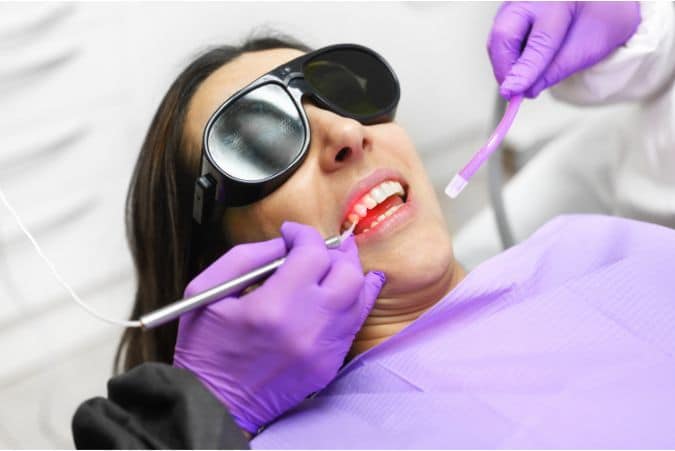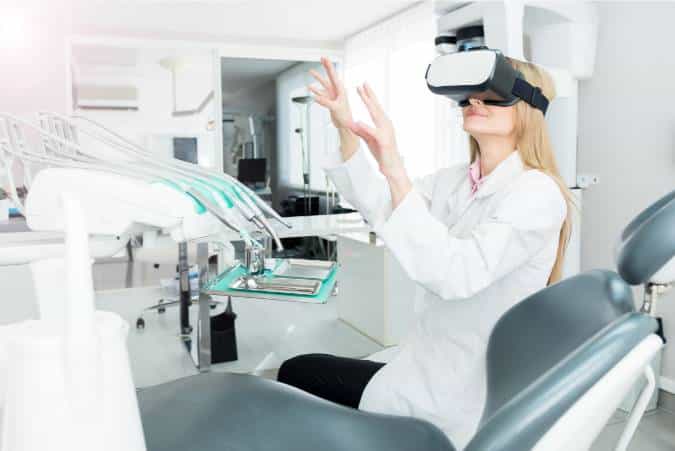Today, we live in a more exciting world of dentistry, where cutting-edge technology is revolutionising the way we care for our teeth and gums.
This doesn’t mean the end for traditional dentistry practices – certainly not in the short term, however, more and more dental practices, both here in New Zealand and around the world, will start to embrace the opportunities that technology presents in modern dentistry.
From advanced imaging techniques to state-of-the-art treatment options, the dental industry has already started a remarkable transformation and this is something we will see more and more of here in New Zealand.
In this digital era, dentists are harnessing the power of technology to provide more accurate diagnoses, faster treatment times, and enhanced patient experiences.
Whether it’s 3D printing for dental prosthetics, virtual reality for anxiety-free visits, or artificial intelligence for personalised treatment plans, the future of dentistry is bright and promising.
In the post, we explore the fascinating advancements that are shaping the future of oral health and discover how technology is making dental care more efficient, accessible, and enjoyable than ever before.
Benefits of technology in dentistry
Technology has brought numerous benefits to the field of dentistry. One of the key advantages is improved accuracy in diagnoses.
With the advent of advanced imaging techniques such as cone beam computed tomography (CBCT), dentists can now obtain highly detailed 3D images of a patient’s oral structures. This enables them to detect potential issues that may not be visible with traditional dental x-rays, leading to more accurate diagnoses and targeted treatment plans.

In addition to accuracy, technology has also significantly reduced treatment times. For example, the use of dental lasers allows for faster and more precise procedures, such as cavity detection and treatment, gum contouring, and teeth whitening. Laser dentistry eliminates the need for anaesthesia in many cases and reduces the risk of infection, resulting in a more comfortable and efficient experience for patients.
Furthermore, technology has made dental care more accessible to a wider population.
Tele-dentistry, for instance, allows patients to consult with a dentist remotely, eliminating the need for physical appointments in certain cases. This is particularly beneficial for individuals in rural areas or those with limited mobility.
With the help of digital platforms and mobile apps, patients can now access oral health information, schedule appointments, and even receive personalised treatment recommendations, all from the comfort of their own homes.
These advancements in technology have truly transformed the way dental care is delivered, making it more convenient and accessible for everyone.
Innovative technologies in dental care
The field of dentistry is constantly evolving, with new technologies being developed to improve patient outcomes and experiences.
One such innovation is digital dentistry, which encompasses a range of technologies such as computer-aided design and computer-aided manufacturing (CAD/CAM), intraoral scanners, and digital impressions. These technologies eliminate the need for traditional dental impressions, which can be uncomfortable for patients, and allow for the creation of highly accurate and customised dental restorations, such as crowns, veneers, and bridges.
At Hamilton Dental Centre, we have already embraced the benefits of CAD/CAM technology for the production of customised same-day crowns. This means a process that would have once taken 2-3 weeks can be carried out in a day using 3D scans and virtual designs in conjunction with state-of-the-art milling machines.
Digital dentistry not only improves the fit and aesthetics of dental restorations but also reduces the turnaround time, as the restorations can be fabricated in-house using milling machines or 3D printers.
Another groundbreaking technology that is transforming the dental industry is artificial intelligence (AI).
AI algorithms can analyse vast amounts of patient data, including medical history, radiographs, and clinical notes, to assist dentists in making more accurate diagnoses and treatment plans.
These AI systems can provide real-time feedback during procedures, helping dentists achieve optimal outcomes.
Additionally, AI-powered chatbots are being used to enhance patient communication and education, providing instant responses to common oral health questions and concerns. The integration of AI in dentistry not only improves efficiency but also enhances the overall patient experience.

Virtual reality (VR) is another technology that is revolutionising dental treatment. By immersing patients in a virtual environment, VR helps alleviate anxiety and fear associated with dental procedures.
Patients can explore a virtual dental office, interact with dental professionals, and even undergo virtual treatment simulations. This immersive experience reduces stress and promotes a sense of relaxation, making dental visits more enjoyable for patients of all ages.
VR can also be used for patient education, allowing individuals to visualise the impact of certain procedures on their oral health, leading to better treatment decisions and improved oral hygiene practices.
3D printing in dentistry
3D printing technology has made significant advancements in recent years and is now widely used in the field of dentistry. This technology allows for the production of highly accurate dental models, surgical guides, and even dental prosthetics, such as crowns, dentures, and orthodontic aligners.
With 3D printing, dentists can achieve precise and customised solutions for their patients, resulting in improved comfort and functionality. The ability to create dental prosthetics in-house using 3D printers has also reduced costs and turnaround times, making dental care more accessible and efficient.
Tele-dentistry: Remote oral healthcare
Tele-dentistry is a growing trend in the dental industry, particularly in remote areas where access to dental care may be limited. With tele-dentistry, patients can consult with a dentist remotely using video conferencing or other digital communication platforms.
Dentists can evaluate oral health concerns, provide guidance on home care, and even prescribe medications when appropriate. This technology has proven to be especially beneficial during the COVID-19 pandemic, as it allows for social distancing while still ensuring patients receive necessary dental care. Tele-dentistry has the potential to improve oral health outcomes for underserved populations and bridge the gap in dental care accessibility.
Here in New Zealand, tele-dentistry was hugely popular during the COVID-19 pandemic and it is something that is still offered today by many dental practices, helping to reduce the cost of a “visit” to the dentist and making dental care more accessible to more people.
The role of mobile apps in oral health management
Mobile apps have become an integral part of our daily lives, and dentistry is no exception. There are now a variety of mobile apps available that help individuals manage their oral health effectively.
These apps provide features such as personalised reminders for brushing and flossing, tracking of oral hygiene habits, and even virtual consultations with dentists.
By leveraging the power of mobile technology, individuals can take a proactive approach to their oral health, leading to better overall outcomes.
These apps also serve as educational tools, providing information on proper oral hygiene techniques and promoting healthy habits. The convenience and accessibility of mobile apps make them a valuable resource for individuals of all ages, ensuring they stay on top of their oral health routine.
Challenges and considerations in adopting dental technology
While the advancements in dental technology are undoubtedly exciting, there are challenges and considerations that need to be addressed.
One of the primary concerns is the cost of implementing and maintaining these technologies.
State-of-the-art equipment and software can be expensive, and smaller dental practices may find it challenging to invest in such technologies.
Additionally, ongoing training and education are necessary for dental professionals to fully utilise and stay updated with the latest advancements.
Ensuring data security and patient privacy is another critical aspect that needs to be carefully managed when adopting dental technology. It is essential for dental practices to have robust cybersecurity measures in place to protect sensitive patient information.
The future of dentistry: A tech-driven approach
As we look ahead, the future of dentistry appears to be increasingly tech-driven. The ongoing advancements in digital dentistry, artificial intelligence, virtual reality, 3D printing, tele-dentistry, and mobile apps will continue to shape the way oral healthcare is delivered.
These technologies will not only improve treatment outcomes but also enhance the overall patient experience, making dental care more efficient, accessible, and enjoyable.
Dentists will be able to provide more personalised treatment plans, leveraging data-driven insights to optimise oral health outcomes.
Patients will have greater control over their own oral health through the use of mobile apps and teledentistry, leading to improved preventive care and early intervention. The future of dentistry is bright and promising, with technology leading the way towards a healthier and brighter smile for all.
Here at Hamilton Dental Centre, we are slowly introducing new technology that we feel will benefit our patients and we are excited by the possibilities and the opportunities moving forward.
Site map
Services
Contact Us
T: 07 854 8905
E: info@thehdc.co.nz
3/111 Thomas Road,
Rototuna, Hamilton
copyright © 2025 Hamilton Dental Centre | Credit Terms | Web development by Digital Hothouse

